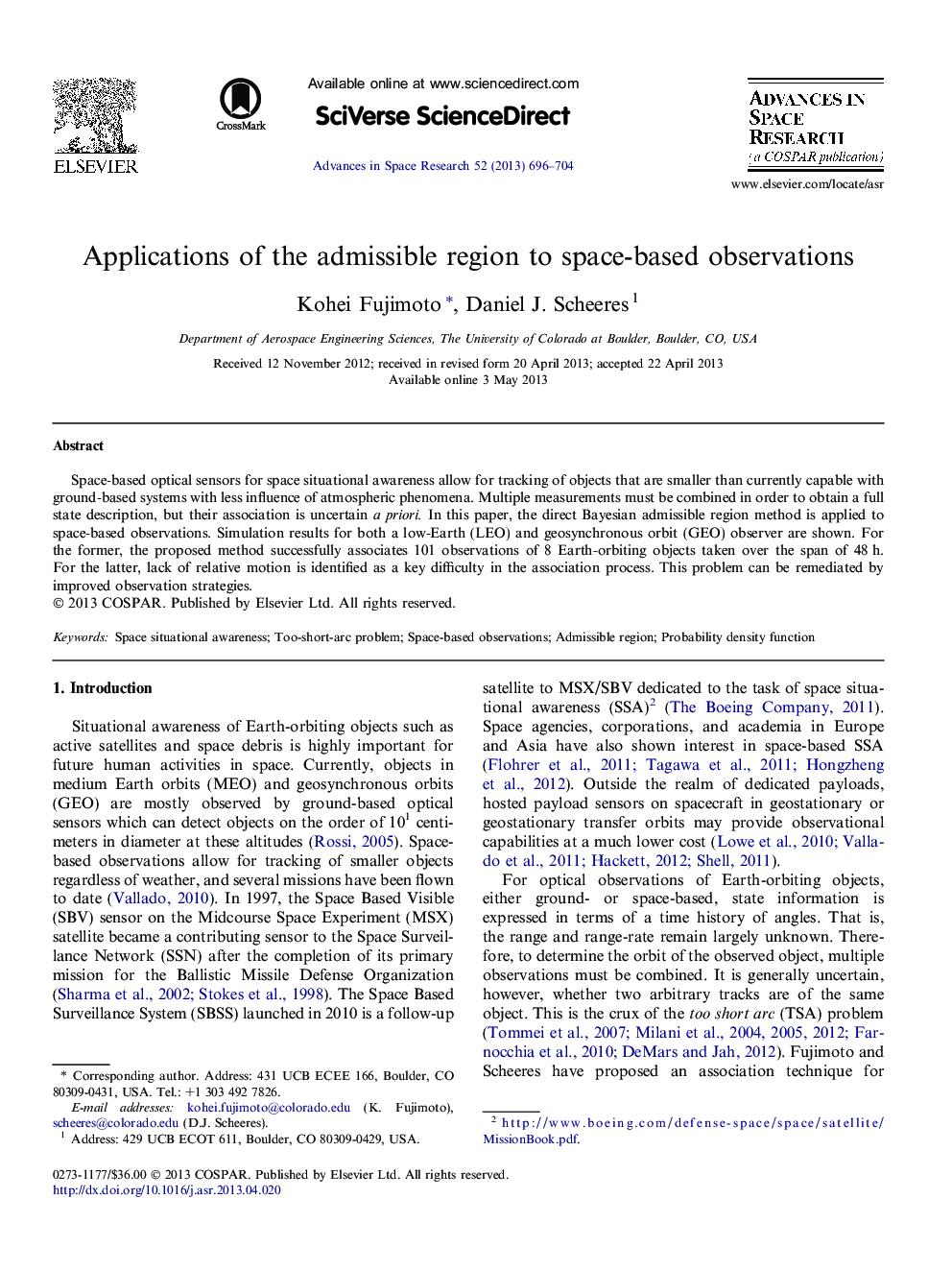| Article ID | Journal | Published Year | Pages | File Type |
|---|---|---|---|---|
| 10694366 | Advances in Space Research | 2013 | 9 Pages |
Abstract
Space-based optical sensors for space situational awareness allow for tracking of objects that are smaller than currently capable with ground-based systems with less influence of atmospheric phenomena. Multiple measurements must be combined in order to obtain a full state description, but their association is uncertain a priori. In this paper, the direct Bayesian admissible region method is applied to space-based observations. Simulation results for both a low-Earth (LEO) and geosynchronous orbit (GEO) observer are shown. For the former, the proposed method successfully associates 101 observations of 8 Earth-orbiting objects taken over the span of 48Â h. For the latter, lack of relative motion is identified as a key difficulty in the association process. This problem can be remediated by improved observation strategies.
Related Topics
Physical Sciences and Engineering
Earth and Planetary Sciences
Space and Planetary Science
Authors
Kohei Fujimoto, Daniel J. Scheeres,
